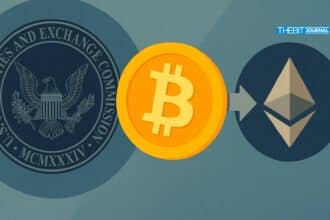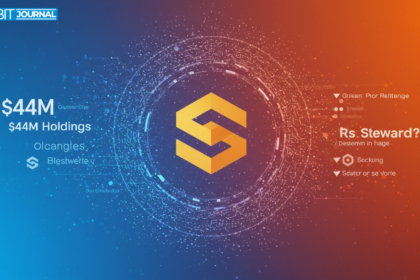According to news reports, the Depository Trust & Clearing Corporation (DTCC) has launched a blockchain-driven platform designed to streamline tokenized collateral management for financial institutions. By streamlining real-time settlement and liquidity, it addresses long-standing inefficiencies in collateral workflows. This is particularly important in volatile market conditions where siloed infrastructure can really hold you back.
AppChain: The New Standard for Collateral Management
This innovative technology is the first industry-wide use of blockchain-native financial tech for digital asset-backed collateral across markets. And it’s built on the LF Decentralized Trust’s Besu blockchain, with DTCC ComposerX as its backbone.
The platform is part of DTCC’s Digital Launchpad ecosystem. You’ll get to see it in action at “The Great Collateral Experiment” on April 23, 2025. The goal is to redefine how financial institutions handle collateral—and that’s exactly what DTCC’s Global Head of Digital Assets, Nadine Chakar, is aiming for.
“We’re going to keep building on this collateral model,” Chakar says. “We’ll be working with the industry and our regulators to develop the standard for tokenized collateral across global jurisdictions.”
The promise of this blockchain framework is clear: enhanced efficiency, greater flexibility, and compliance.
Blockchain as a “Killer App” for Financial Liquidity
DTCC’s CTO, Dan Doney, calls this “real-time collateral mobility” a “killer app” for blockchain within traditional finance. This is because it can unlock liquidity during economic volatility without compromising operational integrity or security.
Officials reported that DTCC processed $3 quadrillion in securities transactions and held custody of over $85 trillion in assets last year. That kind of credibility gives the new platform a strong institutional backing. It could also drive other large financial players to adopt similar tokenized solutions.

The Surge in Tokenized Asset Markets
DTCC’s push for blockchain-powered collateral management aligns with the broader growth in tokenized real-world assets, which now exceed $19 billion in market value. A year ago, this number stood at only $10 billion. The rise of tokenized assets, such as tokenized US Treasuries, which are now valued at nearly $5 billion, and tokenized private credit, surpassing $12 billion, reflects a massive shift toward blockchain as a solution for traditional finance needs.
These advances are backed by some of the biggest names in finance. BlackRock, JP Morgan, Apollo, and Franklin Templeton are all exploring or actively engaging in tokenization, reinforcing the institutional push towards decentralized finance solutions. BlackRock’s USD Institutional Digital Liquidity Fund, for example, is close to reaching $2 billion in assets under management, highlighting the growing acceptance of digital assets in the mainstream financial ecosystem.
Regulatory Environment Paves the Way for Blockchain Integration
An important factor behind the DTCC’s blockchain push is the evolving regulatory environment in the US. The passing of the Lummis-Gillibrand Act and the Digital Commodity Exchange Act in 2024 has provided greater clarity around asset classifications and established the Commodity Futures Trading Commission (CFTC) as the primary overseer of digital assets.
Additionally, the rollback of SEC Staff Accounting Bulletin 121 has eased some of the compliance challenges faced by institutions in holding tokenized assets. This provides a more favorable landscape for financial institutions to explore blockchain-powered solutions without the risk of incurring balance sheet penalties.
Nadine Chakar emphasized that DTCC is working closely with regulators to develop global standards for tokenized collateral, noting,
“We’re engaging with the industry and regulators to ensure that the systems we build align with legal frameworks and promote interoperability across jurisdictions.”
Tokenized Systems for the Future of Finance
The hybrid nature of the DTCC platform, built on Ethereum-compatible infrastructure, reflects a growing trend in finance: the blending of traditional financial systems with blockchain technology. The Besu network, designed to ensure scalability and data integrity, enables secure, private asset movements, while maintaining compliance with financial regulations.
Pilot programs like the Canton Network and the CME Group’s use of Google Cloud’s Universal Ledger are already demonstrating blockchain’s potential as a core component of modern financial infrastructure. These initiatives highlight the clear advantages of tokenization, including the ability to move assets across different jurisdictions and platforms without the delays typically associated with traditional T+ settlement systems.

The Role of Collateral Mobility in Institutional Tokenization
The ability to move collateral quickly and efficiently is a key driver of institutional tokenization. As Chakar explains,
“Collateral mobility will enhance liquidity, enabling assets to be reused, rehypothecated, and transferred without the friction inherent in traditional finance systems.”
This liquidity boost is expected to have a significant impact on both buy- and sell-side participants, improving capital efficiency and reducing risks during market volatility.
This approach is already having ripple effects across the financial sector. Tokenized systems are not only improving operational efficiency but also enabling risk management solutions that are much more transparent and streamlined compared to traditional methods.
Conclusion: The Future of Management
DTCC’s launch of its blockchain-based collateral management platform is huge for the financial industry, representing a decisive step towards greater adoption of tokenized assets in institutional finance. As other industry giants like BlackRock and JP Morgan integrate blockchain into their systems, the momentum behind tokenized finance is building rapidly.
The regulatory clarity provided by recent US legislation, combined with the proven potential of blockchain technology to improve efficiency and liquidity in financial markets, sets the stage for a new era in decentralized finance. DTCC’s initiative is just the beginning; other financial institutions are likely to follow suit, leading to a future where tokenized systems and blockchain infrastructure are deeply integrated into the financial ecosystem.
FAQs
What is tokenized collateral?
Tokenized collateral refers to traditional financial assets that are digitized and represented on a blockchain. These digital assets can be easily transferred, tracked, and used as collateral in transactions without the delays and inefficiencies of traditional systems.
How does the DTCC’s platform improve collateral management?
The DTCC’s platform uses blockchain technology to enable real-time settlement and liquidity for collateral. This reduces operational costs, enhances transparency, and allows for faster movement of assets across markets.
Why are institutions adopting blockchain for collateral management?
Blockchain offers increased efficiency, transparency, and security compared to traditional financial systems. It also provides greater liquidity and capital efficiency, making it an attractive solution for institutional players.
What is the significance of the regulatory landscape for tokenized assets?
Clear regulations help reduce uncertainty, encouraging institutional adoption of blockchain and tokenized assets. Recent US legislation has clarified the classification of digital assets, which is crucial for institutional participation.
Glossary
Tokenized Assets: Traditional financial assets converted into digital tokens on a blockchain, allowing them to be easily transferred and tracked.
AppChain: A blockchain solution tailored to a specific application, in this case, managing collateral operations.
Collateral Management: The process of managing assets pledged as security for loans or other financial obligations.
Smart Contracts: Self-executing contracts with the terms of the agreement directly written into code on a blockchain.
Besu Blockchain: A blockchain framework compatible with Ethereum, designed for enterprise use, supporting the DTCC platform.
Rehypothecation: The practice of using assets pledged as collateral by one party to secure the liabilities of another.



























